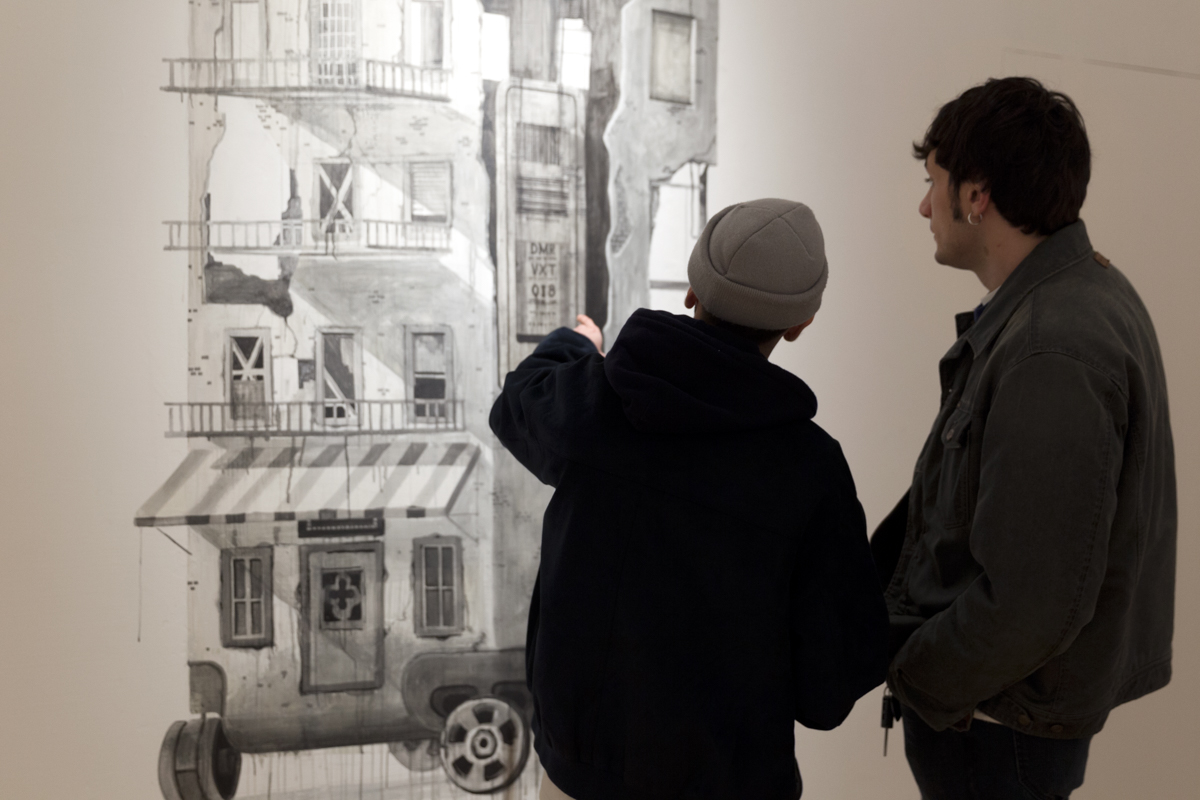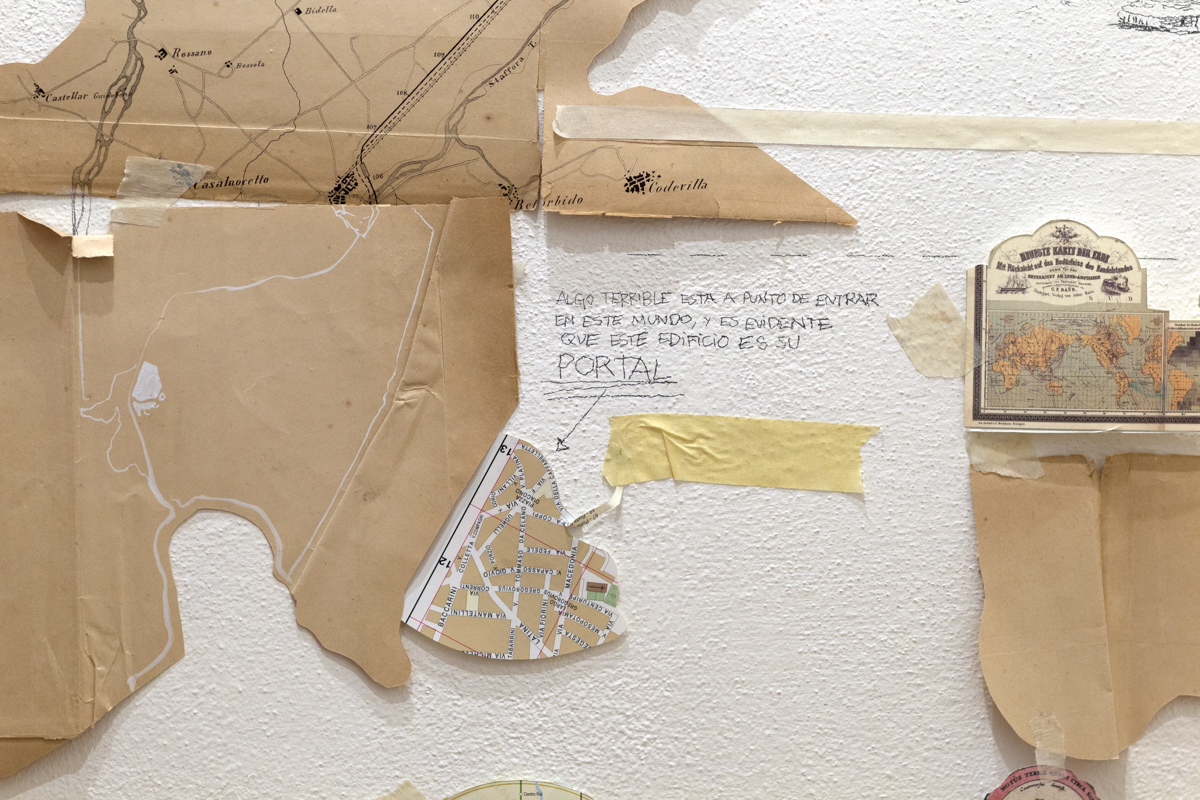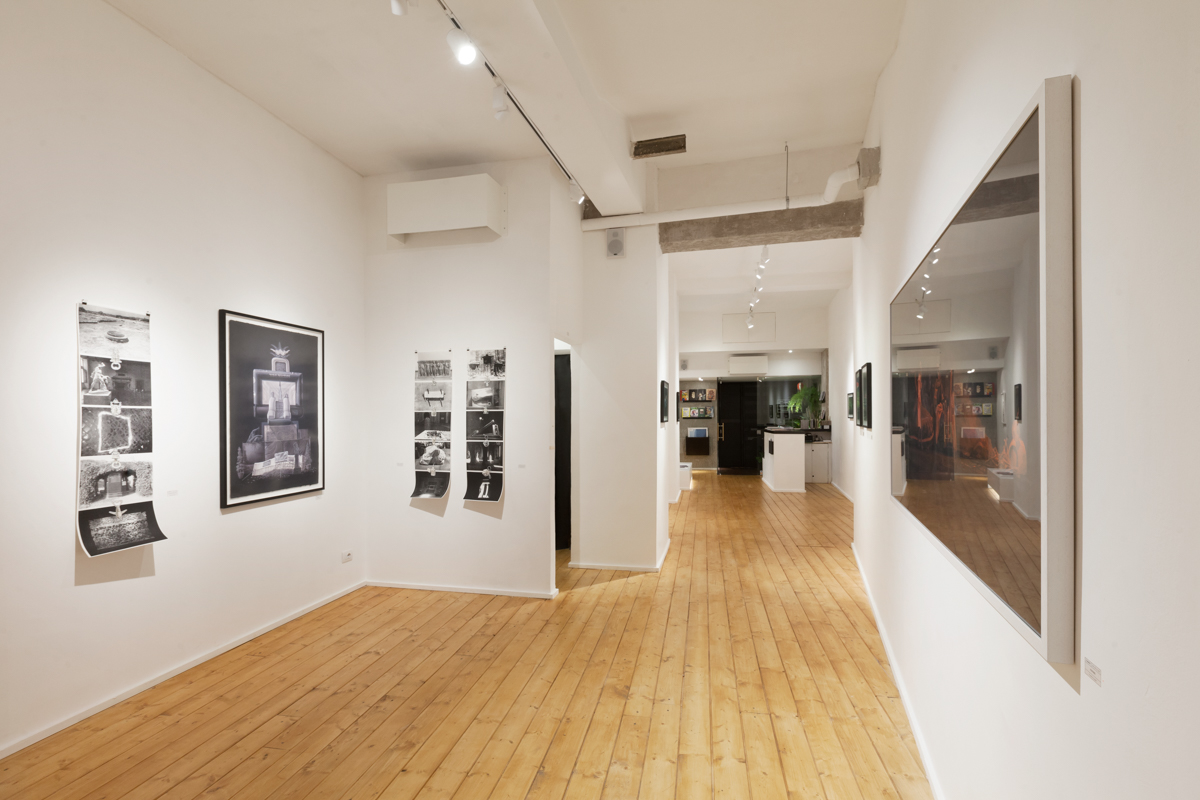MUNOZ – VEXILLUM TRANSPARENT
INTERVIEW BY GALLERIA VARSI

Since the beginning of your artistic career, you have chosen to express yourself and to share your thoughts with everyone by painting your ideas on public spaces. Why this choice? How has your relationship with the street changed since then?
A: Actually, when I started painting I did not make any specific choices. As for everyone who was doing graffiti, the street was a perfect playground, the logical extension of children’s adventures where you first explore your neighborhood, then the one beyond, and so on … In that period nothing had to do with art, much less with work.
For me it is interesting to see how my work and play have evolved and merged in these twenty five years. In 1993 I was writing my name on the streets, without remotely thinking that in 2018 the basic concept of “street” was going to be the core of most things related to me, not only as an artist, but also as a viewer.
It is therefore paradoxical how, in a totally natural way, the games of a twelve year-old child have crossed with the artistic-professional ideas and responsibilities of a thirty seven year-old man: nothing has substantially changed and there have been no major gaps or turning points.

When you create your works, it seems you always have your viewers in mind. What kind of relationship does your work establish with its spectators? What impact do you expect your works may have on a specific territory and on the people that live there?
A: Viewers are really important if you have grown up painting on the streets. I think my main interest is to disconcert them. You can capture people’s attention only if you detach them from the things they see in everyday life, even though daily objects are always present in my work. I try, at least for a moment, to generate some uneasiness in those who come across my works. My goal is not to disturb or amaze viewers, nor to have them contemplate something, rather to establish a duality in their minds, to place them at crossroads, different from the ones in their daily lives
I deeply believe that art is a place for constant questions. It should not generate answers, or questions I dare say, but rather propose a series of options that spawn from a specific place: the artwork.

The concept of fleeting time is strongly present in your art. Can you tell me better what this means to you?
A: Fugacity is inherent in all aspects of our life. History is full of fleeting facts that continue to echo in our life, especially now that we live in the era of hyper-communication, where nothing lasts and memories have no values. Therefore, I think it is a basic reality that must be taken into consideration in a field as rich as the artistic one. The concept of “temporality” is present in mostly everything I do, although I base my language and symbols on what is physical or material. I almost always try to generate a duality between what is ephemeral and perishable.
Furthermore, in my work I feel the importance of the street and its heavy and solemn walls.
Last year I made a mural in Cáceres (Spain) entitled “I would like to underline” that dealt precisely with these two polar opposites: the solidity and durability of a building against the fragility of the papers I painted on it. I made a series of “low cost” ads (the posters that exist in every city where people offer work, look for a flat or post ads such as “I’ve lost my cat…”). These ads may be one of the most ephemeral and lively things in our cities: they deteriorate and are reborn daily, in a chaotic and uncontrolled way, piling on top of each other, losing their function, but transforming our landscape and our reality.

Speaking of temporality, your painting on the walls of the former female prison in Perugia was erased last summer because the plaster of the building needed to be restored; it was a technical operation. The people there were indignant, and complained that the work should have been somehow “saved” by the institutions. What are your thoughts on that episode? More generally, what is your position in the debate on the conservation of wall paintings?
A: I saw this on the web, someone sent it to me … I am used to these disappearances… in fact I am against the restoration of murals. All the works that are done in the street should have the values of Street Art… If we base them on the fact that they are ephemeral and are against the cult of public monuments, then we will not create monuments for people that go there to take selfies. It is inevitable that this may happen, but I think that we should be aware of this possibility and introduce it in the work itself.
It is a complex topic, but very interesting.
Another example is a project that I developed last year in Belvés (France). I installed nine drawings attached to nine replicas of billboards in different places of the city, each one differently related to its context: some distorted the perception of the landscape, others compensated architectural mistakes, others annulled the environment … After seven months, the sun and the rain generated an oxide in the metal that literally devoured the paper and the images.
And here we go back to the transience of the images: ideas vanish, only bodies remain.

Drawing has become your main technique; I suppose it is a choice that has to do with something practical. What possibilities do this means of expression have for you?
A: Drawing has attracted me since childhood… After so many years of drawing almost daily, I understood why it is so important in life: it is a powerful communication tool, which helps us to express ourselves but also to explain things, for example when we draw a map for someone to find a way, or to organize furniture in a living room. I think that drawing should be taught at school, and that society would benefit from it. In childhood, we all need to draw; it is a tool to understand the world and to imagine ideals, utopias, etc. Why do we stop drawing when we grow up?
Also, drawing is the basic language of the entire artistic work; from a musician to a filmmaker … every artist must draw at some point in the creative process. From what I am saying you can understand my position and my passion for drawing.

On the other hand, paintings will have the leading role in your solo show at Galleria Varsi. What does this exhibition represent in your artistic career?
A: Since last year I have been painting more, maybe because in my last murals I had to paint, rather than draw, due to time constraints. I also think that this year my hand seems to prefer to paint, but even so mine are very “drawn” paintings. I must say that in many of my works drawing and painting have gone together… drawing as a “projective” technique and painting as something closer to “conventional” images.
The exhibition at Galleria Varsi involves a deeper approach to a subject which I have indirectly been working on for years: tourism. This is also a critical metaphor for me, related to my traveling and painting experiences around the world; something like cultural tourism, not to visit local monuments, but to install them. At the end, the murals we make are invasions of spaces that belong to other people, with cultures and realities different from mine.
Although the ideas presented in this exhibition slightly differ from this appraisal, they have much in common with it.

This project has the intent to question various themes. With this exhibition you choose to tackle an unprecedented topic from a sociological point of view but also from daily life: tourism. This choice derived from the demonstrations that took place months ago in Spain against tourists. What dynamics struck you in these events and more in general, what prompted you to explore this topic? What questions do you want to share with the viewer?
A: As I said before, my interest in tourism is not new, but I started reconsidering it from a different angle due to the anti-tourism protests that took place in Spain last summer, mainly in Barcelona. I was strongly attracted to the visual or aesthetic aspects of this situation. The protesters were mainly groups of young people who for various reasons wanted to defend the “integrity” of their city or province, or their country… Here is the crux of the matter: can we defend national or local identities in the face of the deterioration that involve tourist visits? Can we continue to cherish old values as an inbred treasure to experience only among us, or should we share them with people from China or Norway? In what way can we share them? As human beings? As the commercial exploitation of a heritage? How far can capitalism inflate our cultural values? Would Rome be the same city it is today without the thousands of tourists who came to visit its ruins and historical treasures?
I do not know how an Australian can understand the grandeur of the thermal baths of Caracalla … by Skype? … Maybe we should send him in an email so that his visit does not cause collateral damage in the city…
Many ideas are being discussed right now and we cannot cover them all; but the fact that they are in the air interests me, especially if they are not fully logical; something like what Jean-Paul Sartre called “the insurmountable horizon of our time”.

“Vexillum Transparent” comes from the Latin and means “Transparent Flag”. What does this title suggest?
A: I have chosen this title for several reasons; it seemed appropriate to talk about globalization, since a “vexillum” was a flag or banner of the Roman imperial legions; each legion had its own, and it served to identify the legion itself and also to gather men in battle. I found interesting to use this concept of a unifying and identifying element but to completely empty it, making it transparent and silent. I have tried to create this emptiness by producing an excess of images: saturation can lead to emptiness, or infinite screaming can generate silence.
I think that silence is a good metaphor for our time; borders and identities are diluted despite the contradictions we find in the short term.
I also found it interesting that “vexillum” is the diminutive of “vellum” (sail). Therefore, it is connected to travel: the sails that, driven by the wind, propel the ships. I really liked these two meanings of the word: an object that apparently can have military and travel echoes at the same time.
Also, a transparent flag does not make sense; it is like holding the symbol of nothing, although if you look through it you can see what is behind it.

Many of your works contain contrasting concepts, like in some paintings you have created for “Vexillum Transparent”. Which opposites will coexist at Galleria Varsi?
A: The main opposites are related to identity and globalization. The theme of tourism is an excuse to investigate what kind of images creates our positions on “local” and “global” things. It is like our relationship with the sacred images we worship: if we look at them too closely they lose their magnetism, and yet the cult we render to these banal images is true.
I am interested in setting a scale of values that might be confusing, but that serves as a starting point to reflect on the experiences we live when we travel. Whether or not we are aware of it, tourism is the biggest human flux of our times, which goes well beyond migration. In the past, mass exoduses, colonialism or the migration of labor shaped the countries we know today. The most obvious case is the United States: a country founded and created by immigrants from all over the world with one of the most radical kinds of patriotism today.
I prefer that viewers carefully observe my works and to come up with their own conclusions, but anyway here are some of the opposing concepts in the exhibition:
LOCAL / GLOBAL
ESSENCE / DISSOLUTION
HEDONISM / RESPONSIBILITY
RENTED HOME / PURCHASED HOME
SURPRISE / ASSIMILATION
ADVENTURE / BOREDOM
PURITY / CONTAMINATION
SOLIDITY / MALEABILITY
PRESENCE / ABSENCE
ENLIGHTENMENT ON THE TRIP / TRAVELER’S SHADOW
VITAL VACUUM / ICONIC SATURATION
MIMETIZATION / DIFFERENTIATION

With globalization, places are leaving more space to non-places. What experience can a person live of a different setting? How do you imagine the tourist of the future?
A: I think that the concept of “non-places” well defines many of the ideas raised in the exhibition, and which undoubtedly identifies our time and will continue doing so in the future. It is evident that the web is the most radical change that we have lived since the fall of the Berlin Wall, (curiously Internet was born in 1989). The web defines our era. I speak of it because it is the perfect “non-place”. It could be something like the matrix from which all other things derive: borders, language, information … Therefore, I think that tourism is now like traveling on the Internet; everything depends on whether the individual wants to stop and learn something along the way, or to just have exotic fast food experiences. We can visit the ruins of Pompeii and feel that nostalgic magnetism of a tragic history, but we can also be interested in urbanism, agriculture, power, slavery, mythology or the functions of painting. The data are there; you just have to want to understand the reason behind certain things to build new ones and improve what we already have.


